
- Home
- Stud Dogs
Some of our most popular Stud Dog Breeds:
- Puppy Litters
- Dog Services
- Dog Breed Profiles
- Blog
- Contact Us
Boxer Breed Profile
- Boxer
- Breed Profiles
- Jul 28
- Share post
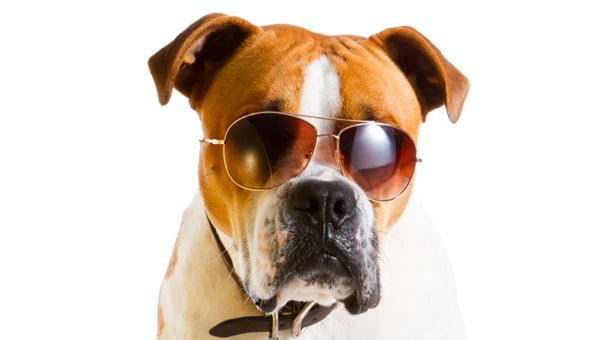
The Boxer is a medium-large Germanic dog with an affable personality. A loyal and lively companion, the Boxer is considered to be one of the top breeds for families with children, owing to their playful nature and protective qualities. Despite their penchant for regular outdoor activities, the Boxer is sensitive to hot and cold weathers, preferring a more mild climate. Boxers have been known to be trained as guide dogs, police dogs, and guard dogs, as well as making excellent pets. Historically, the Boxer would have had their tails docked and ears cropped – however, ear cropping is now illegal in the UK and tail docking is illegal in England and Wales, except for working dogs with specific roles.
Typical Boxer Facts:
Height:
Dog: 22 to 25 inches (55 to 64 cm)
Bitch: 21 to 24 inches (53 to 61 cm)
Weight:
Dog: 60 to 80 lbs (27 to 37 kg)
Bitch: 50 to 70 lbs (22 to 32 kg)
Average Litter Size: 6 to 8 (although up to 10 is not unusual)
Life Expectancy: 10 to 12 years
Good with Children: Yes
Kennel Club Classification: Working
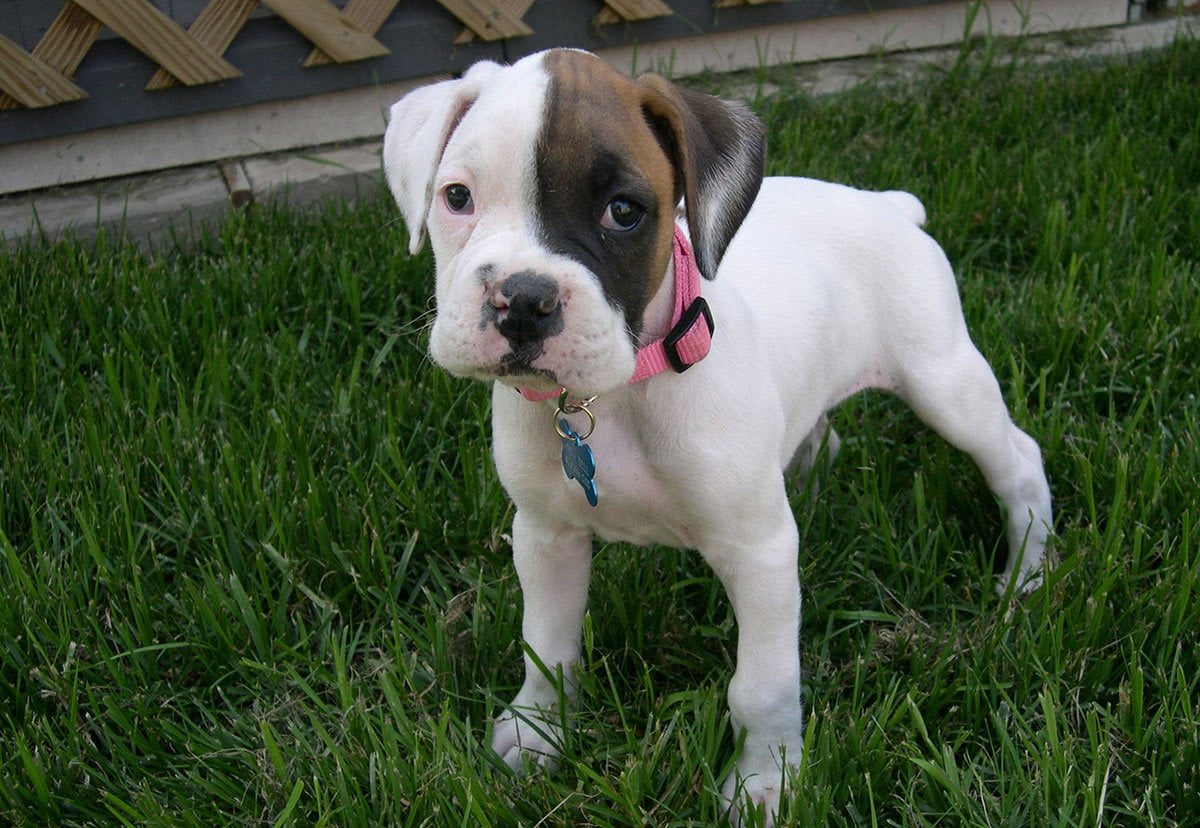
Colour of a Boxer
Boxers come in three possible colours: fawn, brindle, and white. As brindle is a striped pattern over a fawn base, rather than a solid colour, it’s possible to mistake a dark brindle coat as being black. There are, however, no genuinely black Boxers. Fawn includes a range of shades, and both fawn and brindle are accepted as standard colours. White Boxers are not uncommon but they are not generally preferred and are not used for breeding. Boxers often have markings and patches of more than one colour, classifying them as Flashy, Parti-coloured or Check, among other terms.
Grooming a Boxer
Being a short-haired breed means that the Boxer is an easy dog to keep clean. Unlike breeds with long hair, Boxers do not require their coat to be brushed in order to remove tangles. They also aren’t prone to unpleasant smells, so they’re very low-maintenance dogs. It’s wise to give them a weekly brush to remove dead hair and to wash them with dog shampoo every few months. It’s also important to ensure that their nails are regularly clipped and to clean their teeth and ears to keep them healthy.
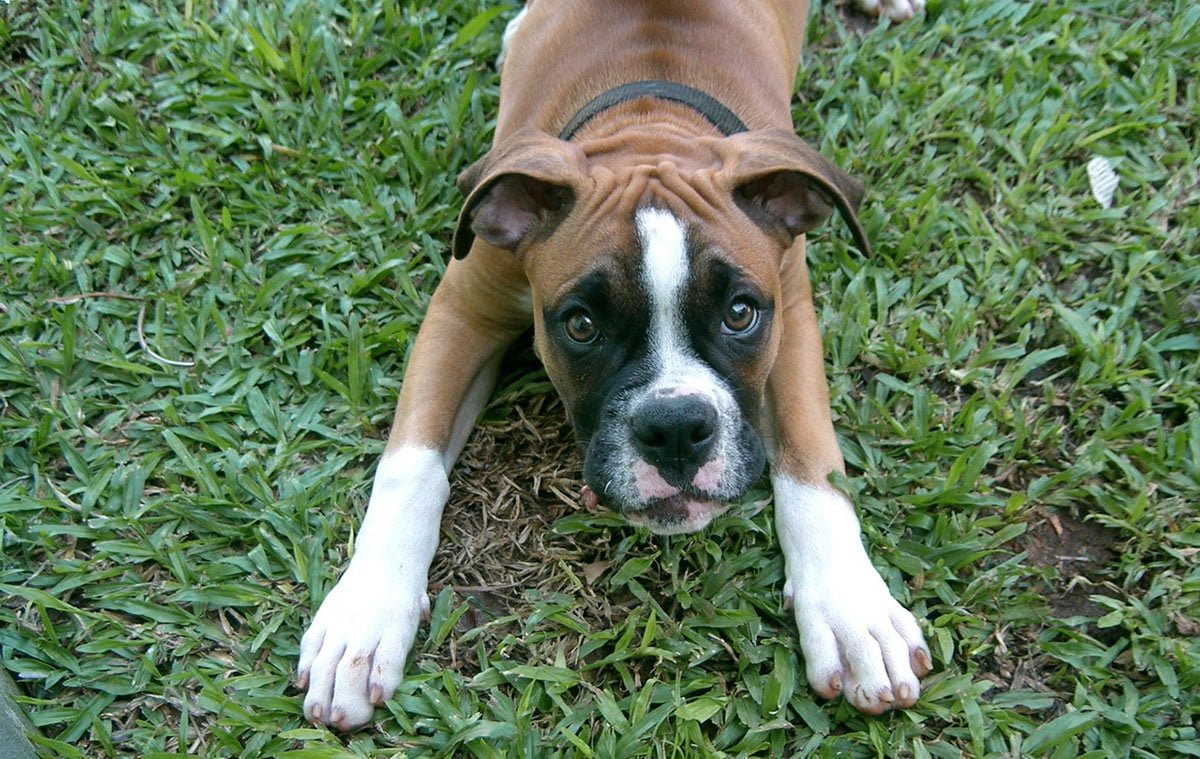
Boxer Common Ailments/Health Issues
The Boxer breed is prone to a few health conditions, but some of them are relatively minor, such as hyperthyroidism, alopecia, eye disease, colitis, and skin disease. These can usually be treated with medication. Some more urgent health problems are cancer, hip dysplasia, neurological disease, heart disease, and gastrointestinal conditions, so it’s important to seek medical help if your Boxer seems unwell. Always check the family history of a dog before purchasing to reduce the risk of your Boxer inheriting any genetic conditions.
Temperament of the Boxer
Boxers are known for their happy temperament, faithful tendencies, and loving nature. These fun-loving dogs are balls of energy and make splendid family pets, owing to their gentle disposition and affection for children. Their natural guardian instinct makes them excellent guard dogs if trained properly, and above all they thrive on companionship.

Training a Boxer
The Boxer is an intelligent breed that is known for being easy to train. Crate training tends to be effective for house training a Boxer, and they respond well to positive reinforcement and rewards, as opposed to harsher disciplinary techniques. As they tend to be high-spirited, particular attention must be paid to ensuring the Boxer does not pull on the lead, and to curbing their enthusiasm for jumping up at people. Boxers can be strong willed, so it’s advisable to commence training as early as possible. With patience and consistency, training a Boxer should prove to be smooth and successful.
Exercise for a Boxer
The playful Boxer is a relatively large dog that needs a substantial amount of daily exercise. Regular walks and vigorous playtimes will keep a Boxer happy and healthy. There’s no real upper limit to the amount of exercise a Boxer can handle, so aim for at least two hours a day as a minimum. Boxers will become frustrated and destructive if they are not taken out often enough, but make great pets for active owners.
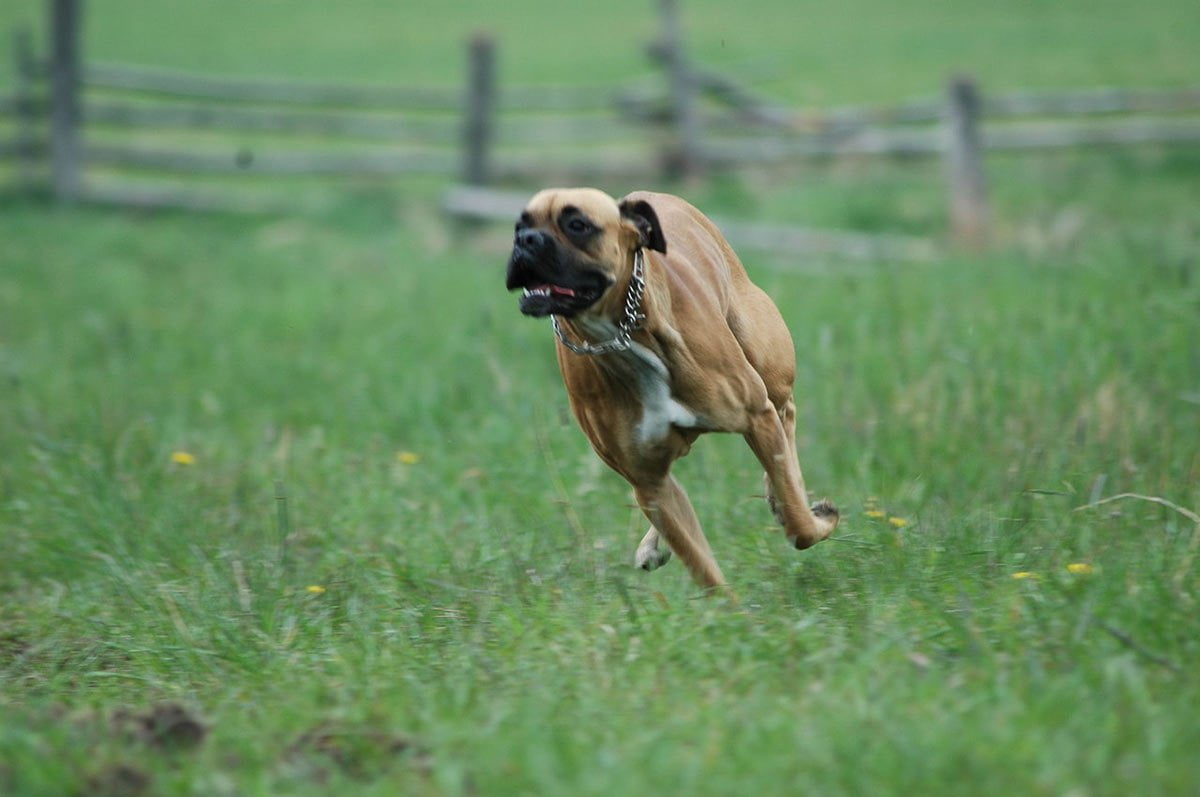
History of the Boxer
The Boxer originated in the 19th century as a cross between a German Bulldog breed – now extinct – named the Bullenbeisser, Great British Bulldogs, and a Mastiff type of breed. Originally, the sturdy Bullenbeisser was known for hunting large prey, such as bears and bulls. A later form of the Bullenbeisser, from Brabant, a province of Belgium, was smaller and faster than its predecessors, and this latter Bullenbeisser is thought to be one of the ancestors of today’s Boxer.
Further back in time, the forefather of all large solid breeds, including the ancestors of the Boxer, was the ancient Molossian hound. This type of dog was a large and ferocious breed used for hunting and was mentioned in many ancient Greek texts by famous writers and philosophers including Aristotle, Seneca, and Virgil.
There are many debates regarding the origin of the name Boxer. One theory is that the breed enjoys standing on its hind legs and making a boxing motion with its front legs, but this is not commonly accepted as a valid explanation. As the breed has Germanic lineage, another more plausible theory concludes that the word Boxer drives from the word ‘Boxl’. It’s thought that the Brabant Bullenbeisser was often called a Boxl, and thus passed the moniker down to its descendent.
Following the development of the first Boxers, in 1896 the breed was exhibited in a Munich dog show by three Germans, and subsequently registered officially in 1904 by the Deutscher Boxer Club and the American Kennel Club. During World War I, Boxers were relied upon for a number of duties by the military, including carrying messages and packs, as well as working as guard dogs.
After World War II, Boxers gained fame among the general public as pets and show dogs, and are currently one of the top 10 most popular dog breeds in the UK.
Famous Boxer dogs
In 1946, a pair of Boxers named Punch and Judy were awarded the Dickin Medal for saving two British Officers in Israel.
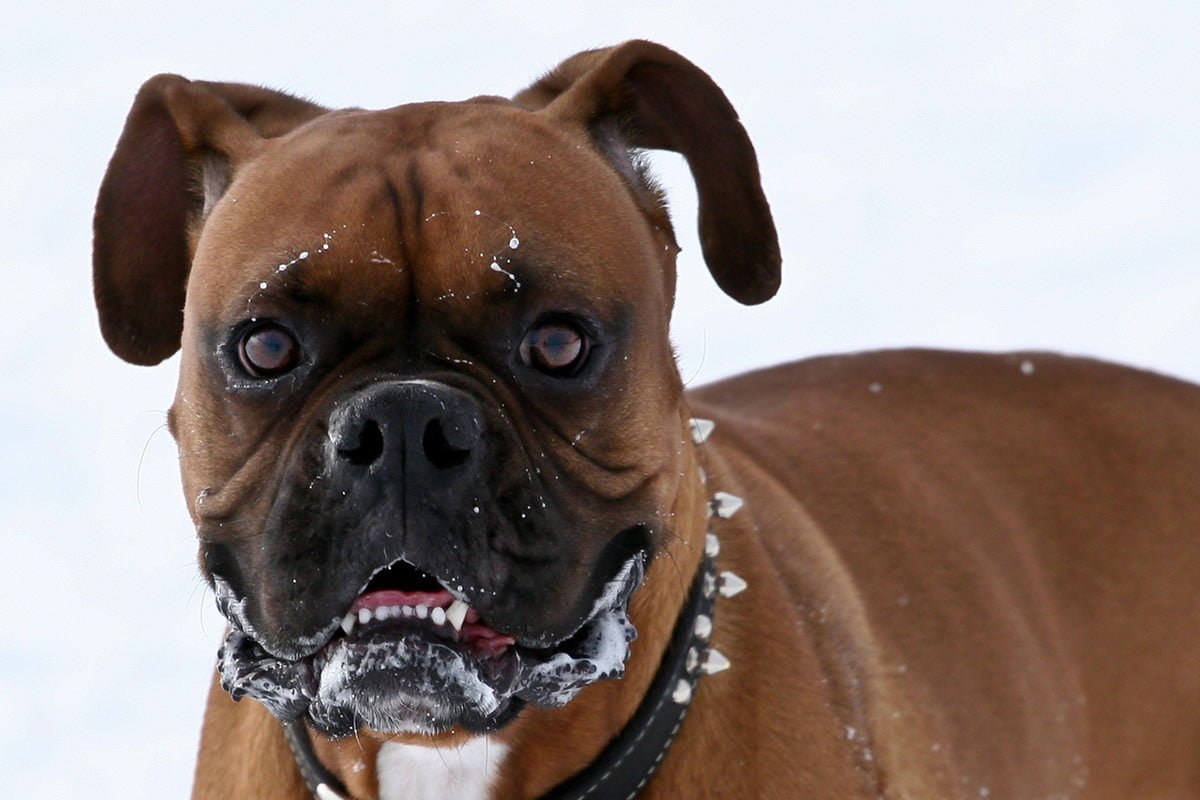
Boxer Stud Dog Listings
A dog owner since the early 80s, after convincing his parents to buy a Yorkshire terrier named Sadie, Darren created Dream Dogs so dog owners could find the best dog related information on the Internet.
Docking and ear cropping of Boxers is illegal throughout the UK